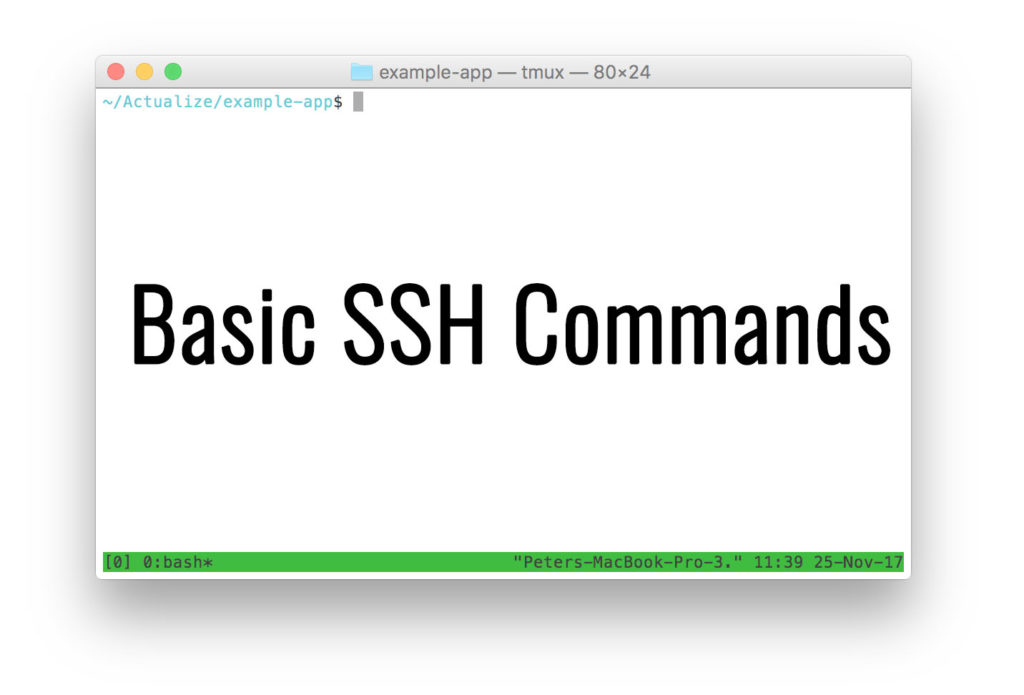
- #ALL MAC TERMINAL COMMANDS FOR FILES HOW TO#
- #ALL MAC TERMINAL COMMANDS FOR FILES INSTALL#
- #ALL MAC TERMINAL COMMANDS FOR FILES FULL#
- #ALL MAC TERMINAL COMMANDS FOR FILES DOWNLOAD#
To do that, just enter the following command in Terminal: /bin/bash -c "$(curl -fsSL )"
#ALL MAC TERMINAL COMMANDS FOR FILES INSTALL#
What you need is specialized partition recovery and repair software like TestDisk, which runs directly in the Terminal app.īefore you can install TestDisk, you first need to install Homebrew, a free and open-source software package management system for macOS. When dealing with damaged or lost partitions, simple Terminal commands are not enough to save the day. Method 3: Restore lost partitions with TestDisk Method 2: Recover deleted files with data recovery software. If it doesn’t show up in the prompt window, use the search bar with its name to locate it. You should see the deleted file in Finder.
#ALL MAC TERMINAL COMMANDS FOR FILES FULL#
You must use the full file name in the command line for this technique to work.
#ALL MAC TERMINAL COMMANDS FOR FILES HOW TO#
How to Recover Deleted Files Using Mac Terminal Even most of the commands are the same, although you’ll see more periods than frontslahes or backslashes in each one. If you’re familiar with MSDOS or UNIX operating systems, the emulator functions similarly. It can help you open applications, open files using a text editor or specific app, and recover accidentally deleted files. This command will help keep your Mac from going to sleep mode.💡 Mac Terminal is useful for several commands. If your Mac is running a long process that cannot be interrupted, you can use the special command: caffeinate To display a list of currently running processes, open terminal Mac and type the following command: topĪt the top of the list, you will see an overview of the running processes and the resources they are consuming.

:max_bytes(150000):strip_icc()/003_view-hidden-mac-folders-using-terminal-2260776-5c2ea75e46e0fb0001a438c8.jpg)
To do this, execute the command: curl -O specify the URL
#ALL MAC TERMINAL COMMANDS FOR FILES DOWNLOAD#
You can even download a file without using a browser. To simplify the "copy-paste" process, enter the following command: ditto -V ~ / original / folder / ~ / new / folder / If you have file in an unknown format or the file is damaged, you can open it using: cat ~ / enter / file / path If you want to check more often than it does, you can check manually, or you can simply use: defaults write ScheduleFrequency 1 and OS X will check for updates daily. OS X checks for system updates on a weekly basis. To show hidden files and folders, use this command: defaults write AppleShowAllFiles TRUE killall Finder To get the most out of the Mac Terminal, you should know the following commands.īy default, regular users do not see all hidden files and folders in OS X. All Mac Terminal commands can be executed in the application window.

The emulator includes all the necessary features, and eliminates the need for switching between apps while working with it. You can invoke Terminal simply by using hotkeys.

That’s convenient when you need to work with lots of different servers.īesides being one of the best file managers, Commander One also works as the Terminal emulator, making it extremely easy to manage all the system processes. Thanks to the two-panel interface, Commander One improves efficiency and speed, and smartly organizes file operations in queues. What’s more, there is a built-in FTP manager that lets you connect to remote servers using FTP, SFTP, or FTPS. That means you can perform the most frequent tasks just with a touch of a button. Commander One allows you to open any number of tabs, supports various file types, and lets you customize your own hotkeys for any action. The app comes with a classic dual-panel interface and is highly customizable. Commander One is a versatile file management tool offering many features to efficiently work with documents, archives, remote servers, and system processes.


 0 kommentar(er)
0 kommentar(er)
